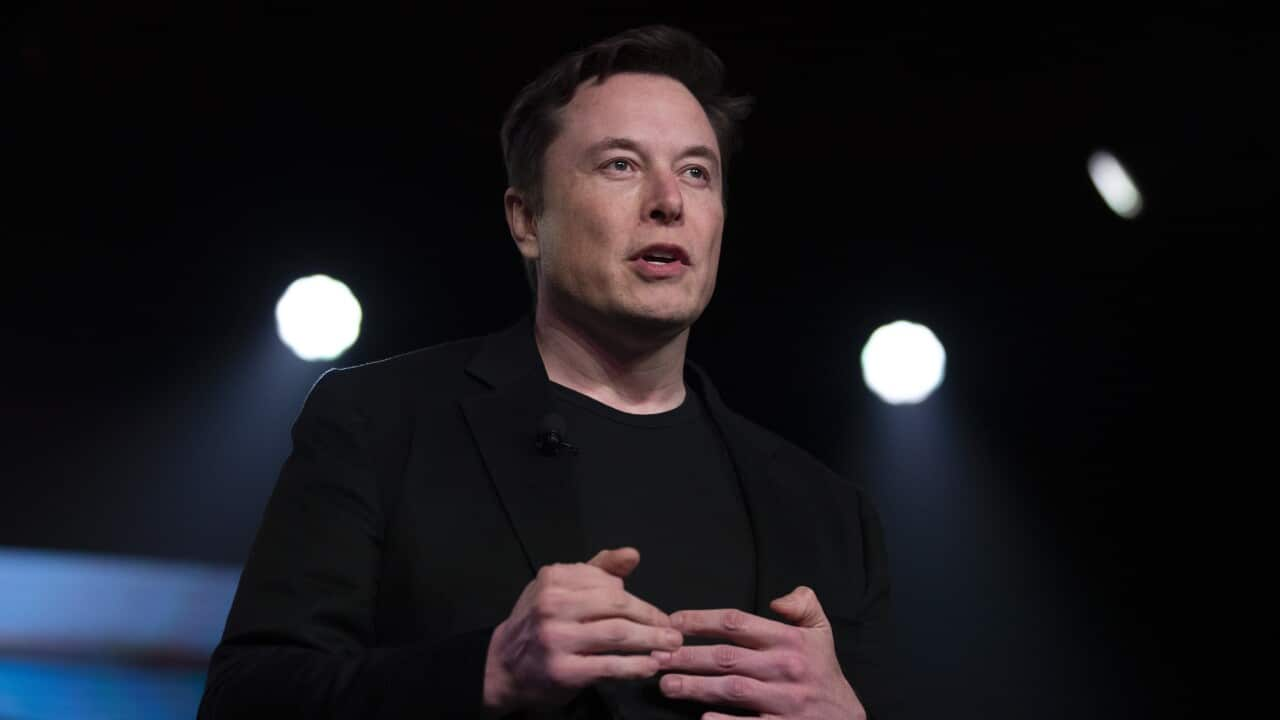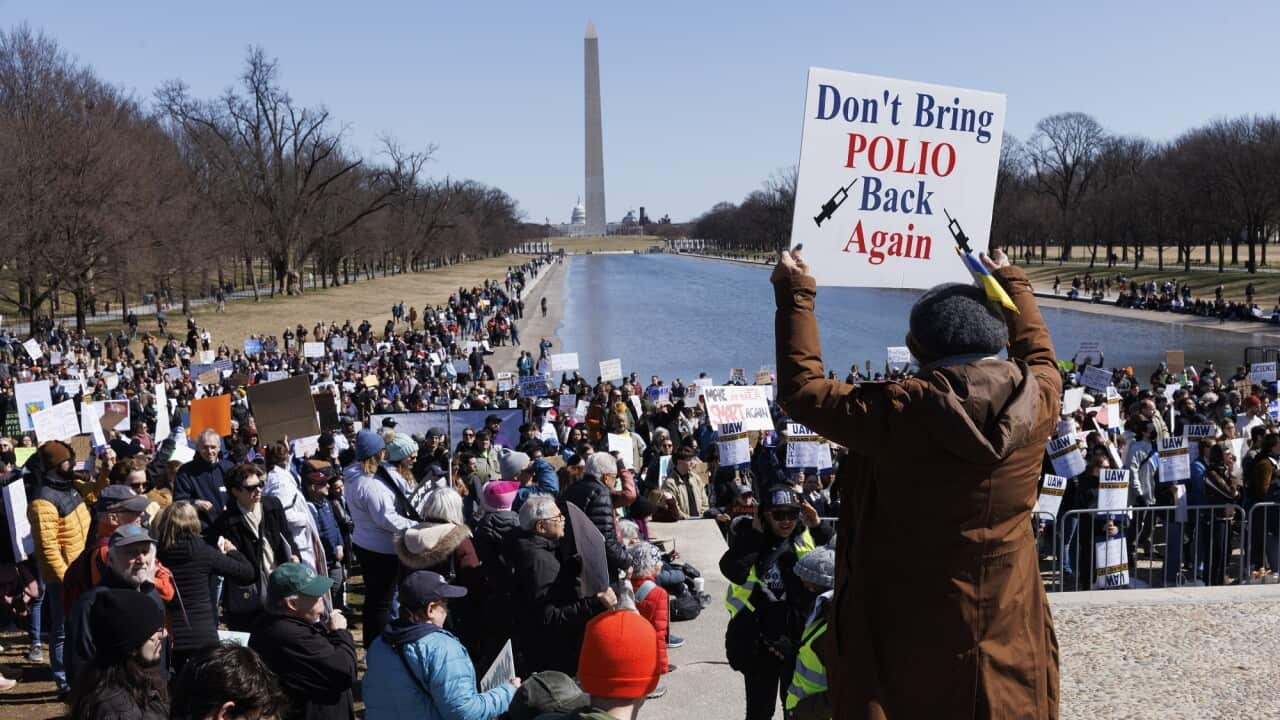Tesla CEO Elon Musk announced this week that his work with the US Department of Government Efficiency (DOGE) will "drop significantly".
In a conference call with Tesla stakeholders, he vowed to only spend "a day or two per week on government matters" starting from May.
Just before the announcement, Tesla shares closed nearly 4 per cent higher after experiencing their biggest one-day fall in four-and-a-half years.
The Reuters news agency reported that Tesla has been facing uncertainty from the Trump tariffs and "shifting global trade policies", adding that the company's vehicle revenue dropped by 20 per cent and net profit by 71 per cent in the first quarter this year — the time since United States President Donald Trump took office and Musk started working at DOGE.
Over the same period, hundreds of protests against Tesla have been organised outside dealerships and on social media around the world. Dubbed the 'Tesla Takedown', the movement is urging people to stop buying Tesla products, sell off Tesla stock, and join the protests.
Some Tesla dealerships have also been vandalised, which Trump called "domestic terrorism" while vowing the perpetrators would "go through hell".
What is DOGE, and how much has it saved?
Despite its name, DOGE is not an official government department in the US administration.
The advisory body was created by Trump during a barrage of executive orders he signed on 20 January, the day of his inauguration.
Several DOGE staff appear to be young people from technology backgrounds with limited government experience.
Musk has been quoted as saying DOGE aimed to cut US$1 trillion ($1.5 trillion) from the federal budget in a bid to reduce government debt. This was partly to be achieved by "mass headcount reductions across the federal bureaucracy".

Last month, over 200 "Tesla Takedown" protets took place around the globe. Source: SIPA USA, AP / Kirsty Wigglesworth
To date the claims it has saved US taxpayers US$160 billion ($284 billion) through the mass government layoffs, pulling back funding from programs and shutting government agencies.
But the claimed savings have been disputed, and at times the group has published incorrect figures.
Reuters found 20 instances where the staff and funding cuts led to purchasing bottlenecks and increased costs; paralysis in decision-making; longer public wait times; higher-paid civil servants filling in menial jobs, and a brain drain of scientific and technological talent.
"DOGE is not a serious exercise," said Jessica Riedl, a fellow at the Manhattan Institute, a fiscally conservative think tank that supports streamlining government. She estimates DOGE has only saved US$5 billion ($7.8 billion) to date, and believes it will end up costing more than it saves.
The examples span 14 government agencies and were described in Reuters interviews with three dozen federal workers, union representatives, and governance experts.
Although these accounts do not provide a comprehensive picture of DOGE's project to drastically cut the cost and size of the federal bureaucracy, Reuters reported they do reveal collateral damage resulting from the group's efforts to make the sprawling federal bureaucracy more efficient.
In response to questions about the impact of DOGE's cuts on government efficiency, White House spokesman Harrison Fields told Reuters in a statement that Musk's team "has already modernised government technology, prevented fraud, streamlined processes, and identified billions of dollars in savings for American taxpayers."
What’s next for DOGE?
Wesley Widmaier, a US-born professor at Australian National University's Department of International Relations, believes it's likely many DOGE employees also worked at X (formerly Twitter), which Musk acquired in 2022. At the time, Musk fired a large number of its employees around the world, including CEO Parag Agrawal.
Widmaier believes that the future of DOGE is tied to Musk and the various dimensions he brings to his role as its chief.
"It's not just Elon Musk as a person, it's Elon Musk as an apparatus," he said.
"If he were to step back [from DOGE], the project he has embarked upon — whatever you think of it — would also dwindle down."

From speaking at election rallies, to meetings in the Oval Office, Musk has been a fixture during Trump's second presidency. Source: EPA, AP / (1) Aaron Schwartz, (2) Sarah Yensel, (3) Chip Somodevilla, (5) Alex Brandon
Given his reduced workload, Widmaier said it isn't clear when exactly Musk's finish date will be.
But when Trump initially signed the executive order setting up DOGE, he also set the deadline of 4 July 2026 as the end date for the department.
This day corresponds with the 250th anniversary of the signing of the US Declaration of Independence.
In response to an X post in December 2024 that said DOGE would finish entirely on this date, Musk wrote: "The final step of DOGE is to delete itself".
No one has been publicly tapped to replace Musk once he officially winds up his work, however one option would be for the group to take its orders from Russell Vought, who runs the Office of Management and Budget — a key agency that oversees government spending and regulations in the executive branch.
Steve Davis, a longtime Musk employee at SpaceX who has taken on a prominent role at DOGE, could be another contender, according to the Wall Street Journal.
With additional reporting by Reuters



